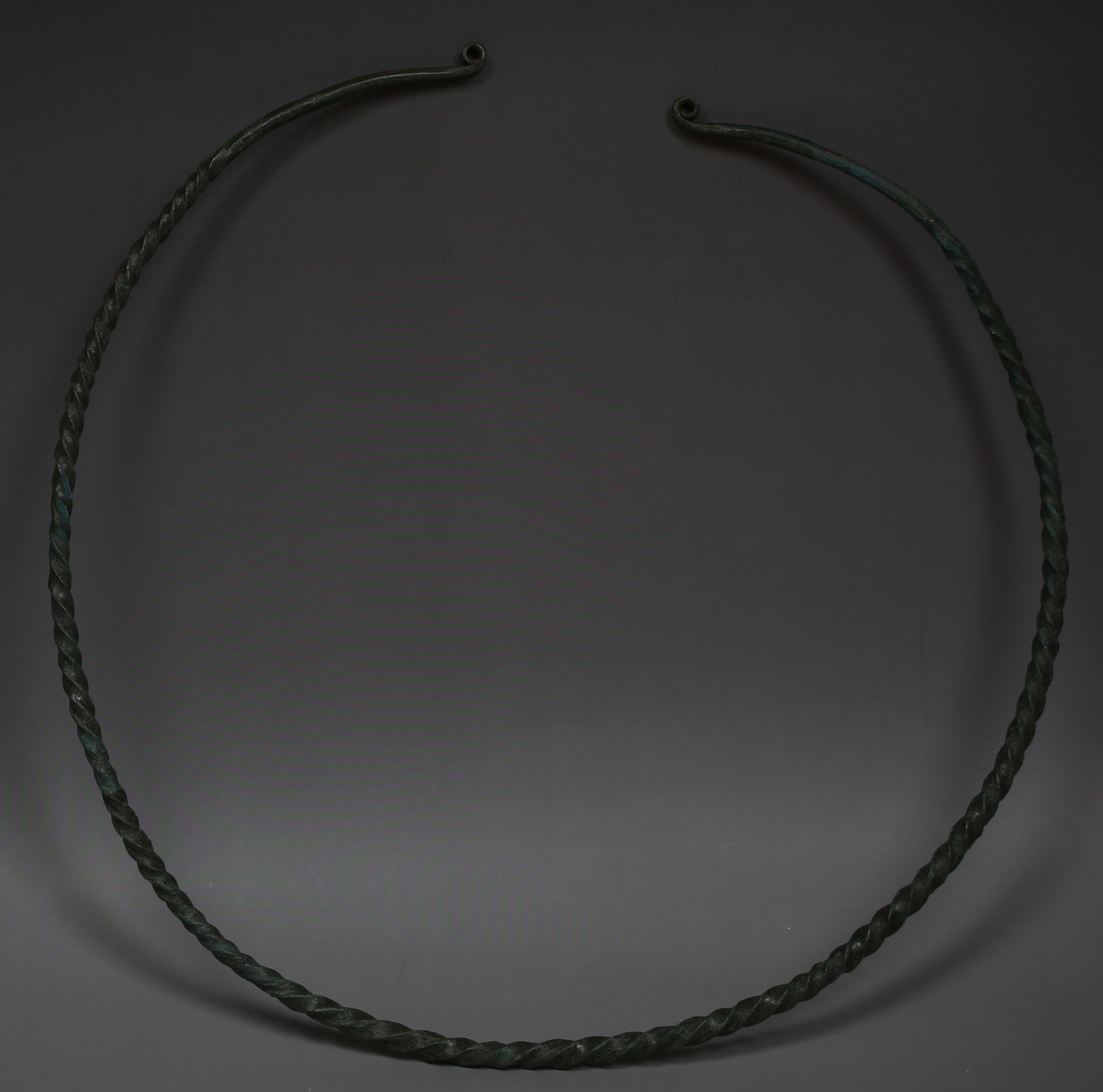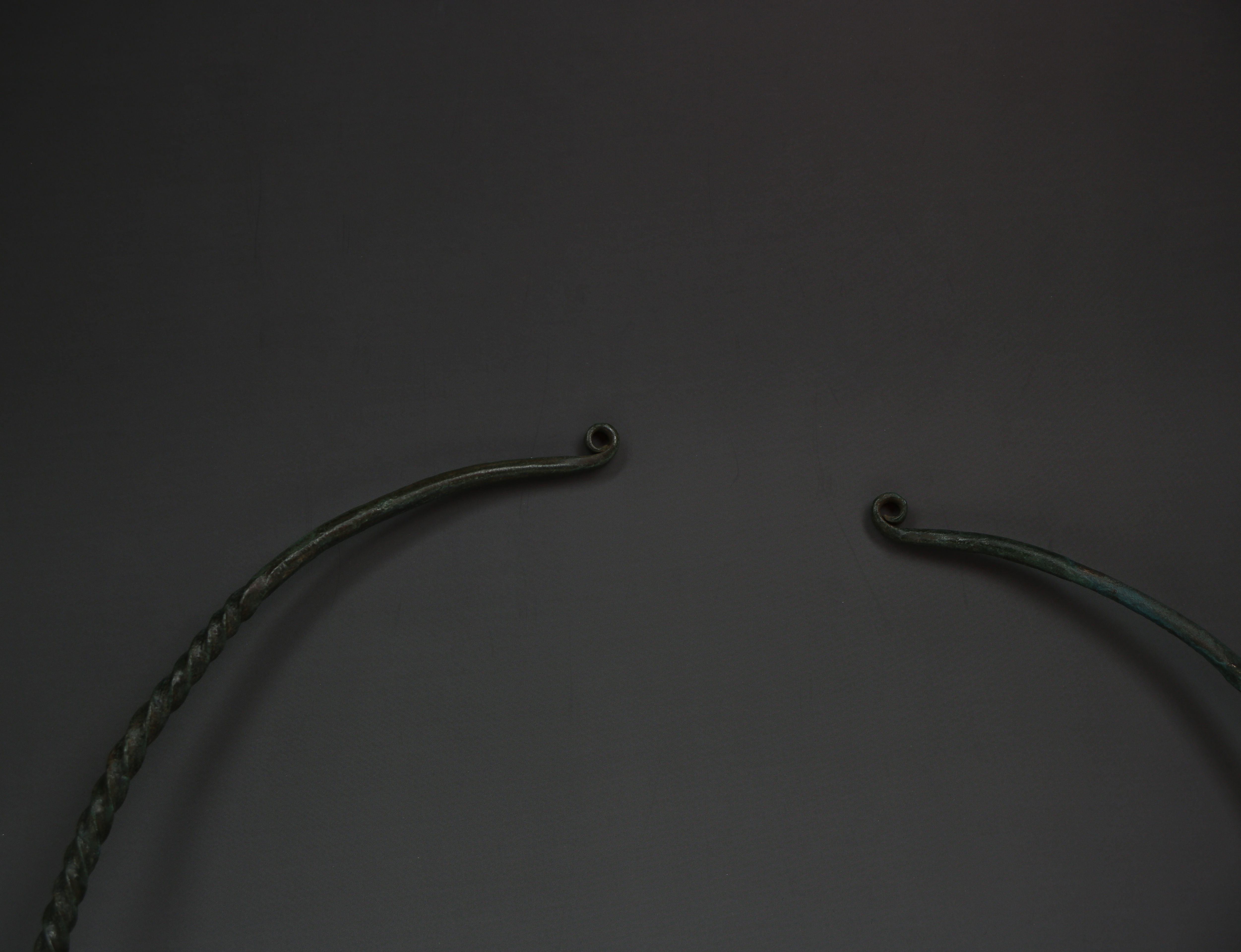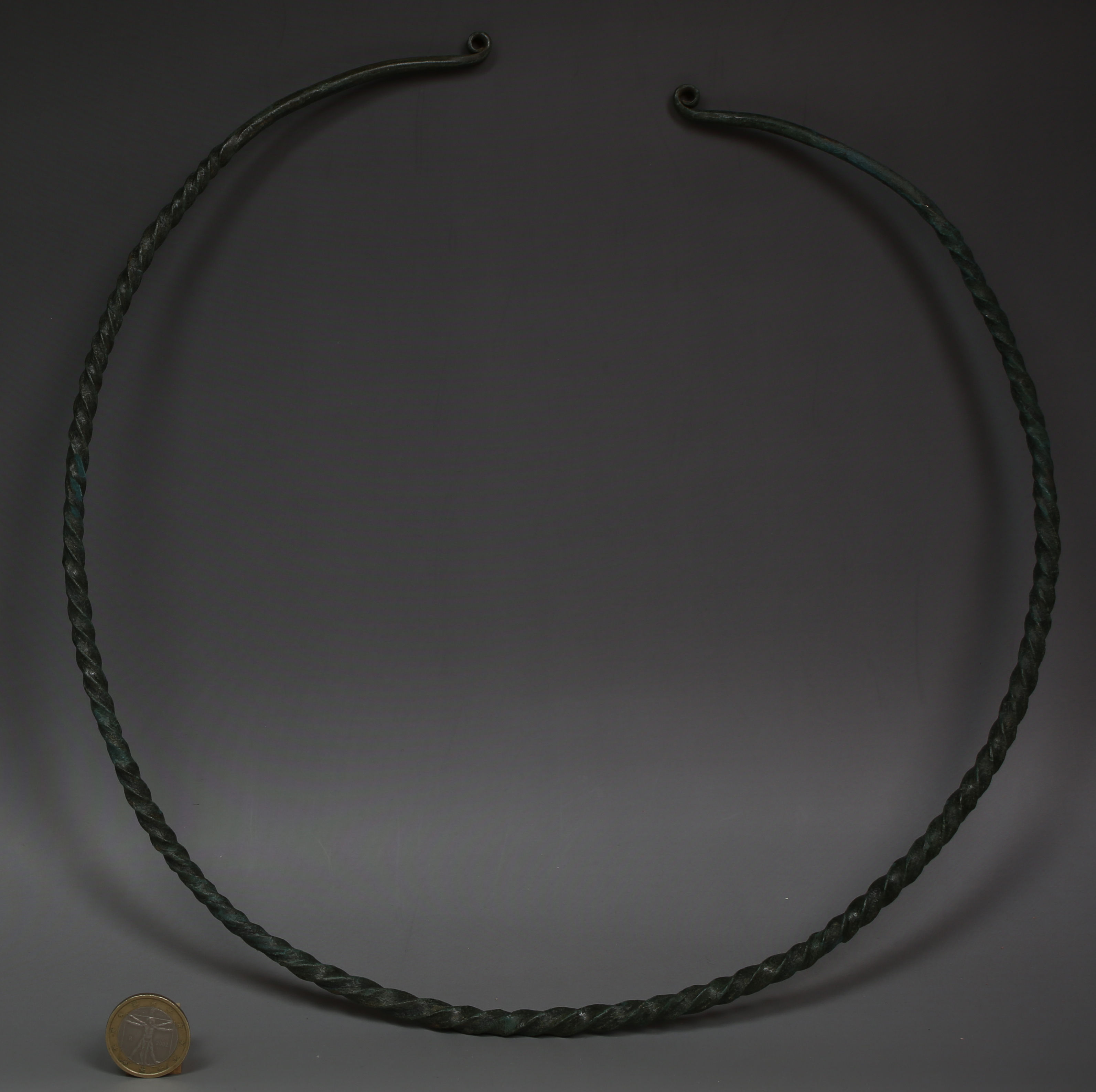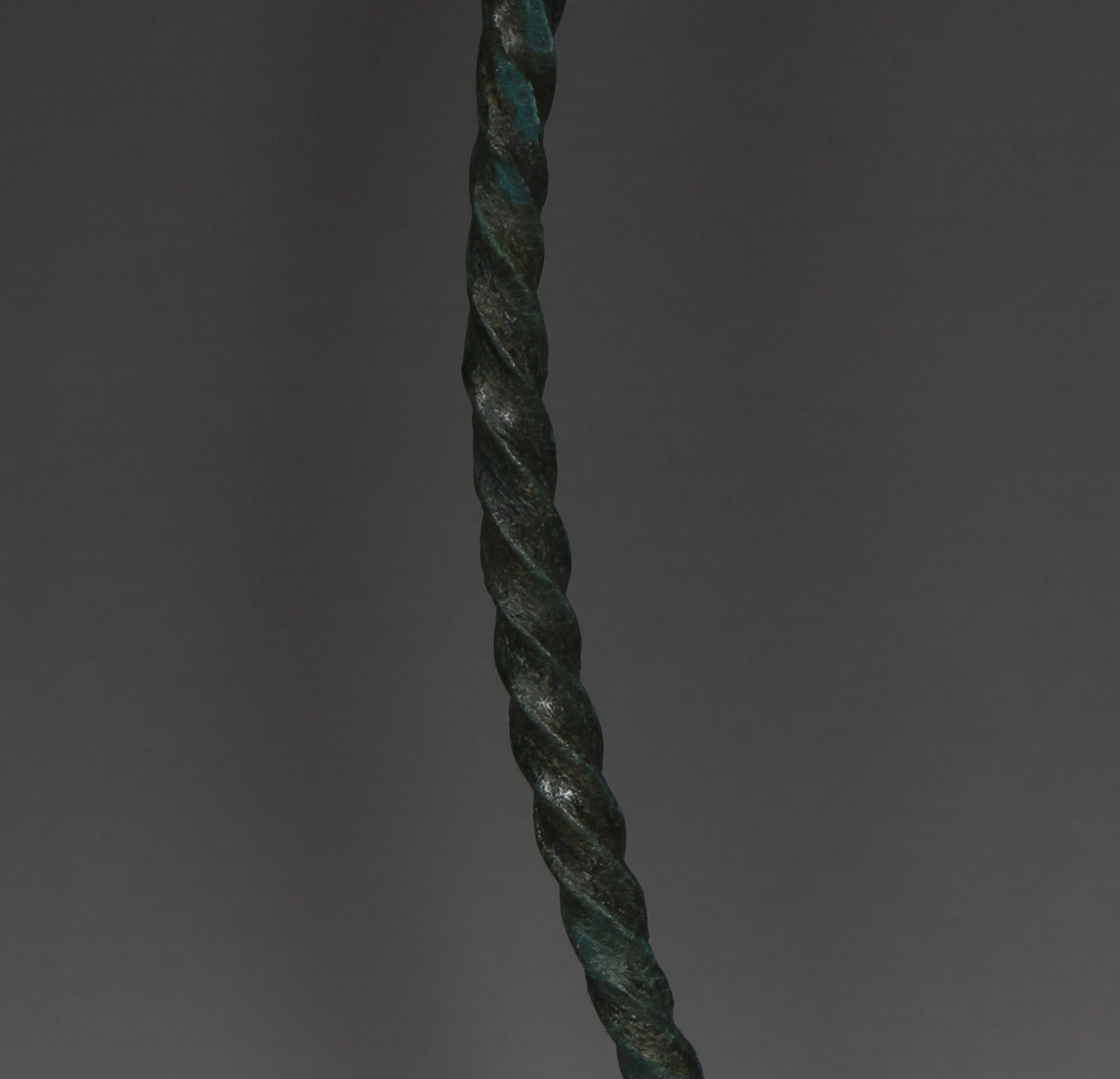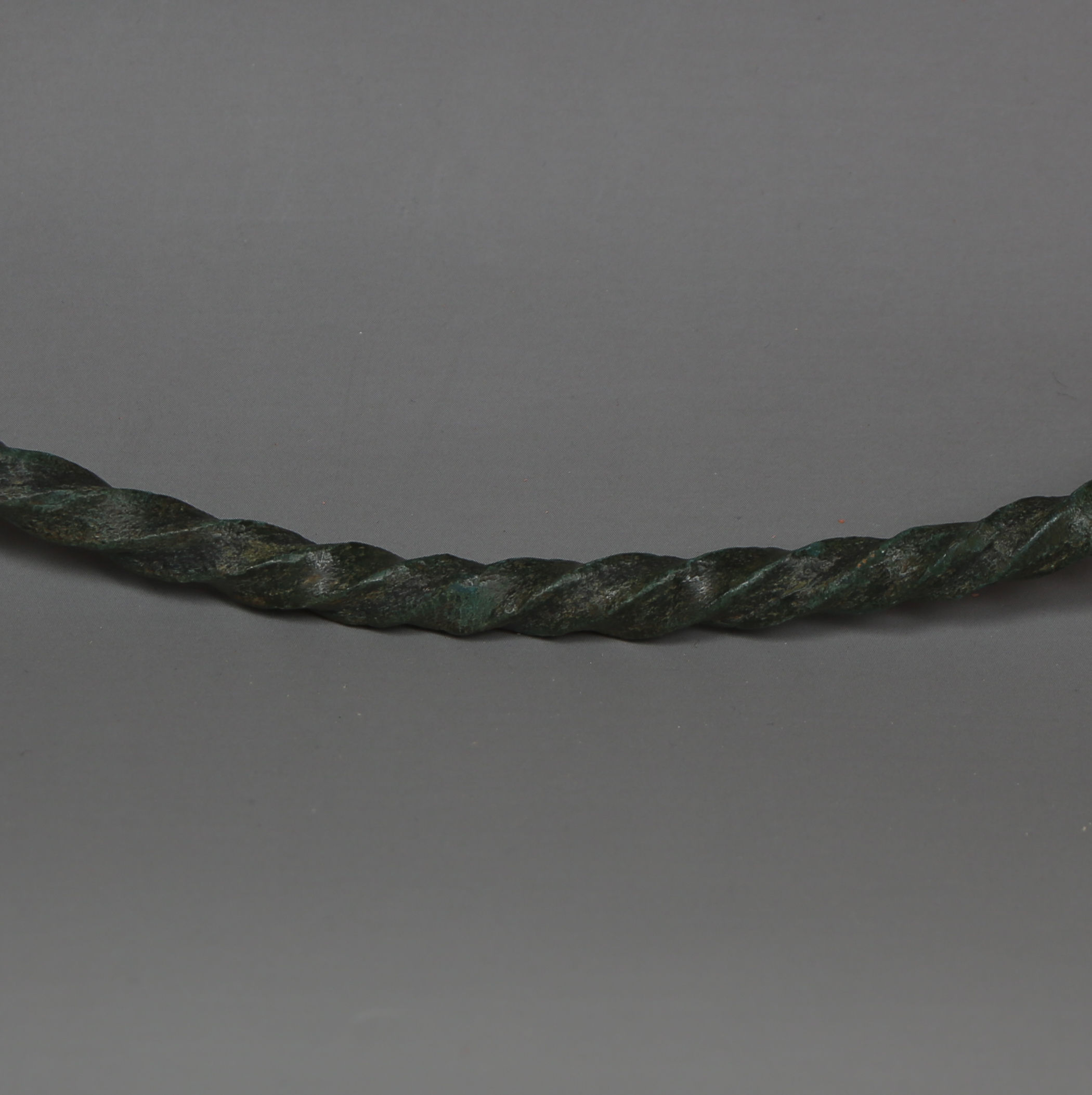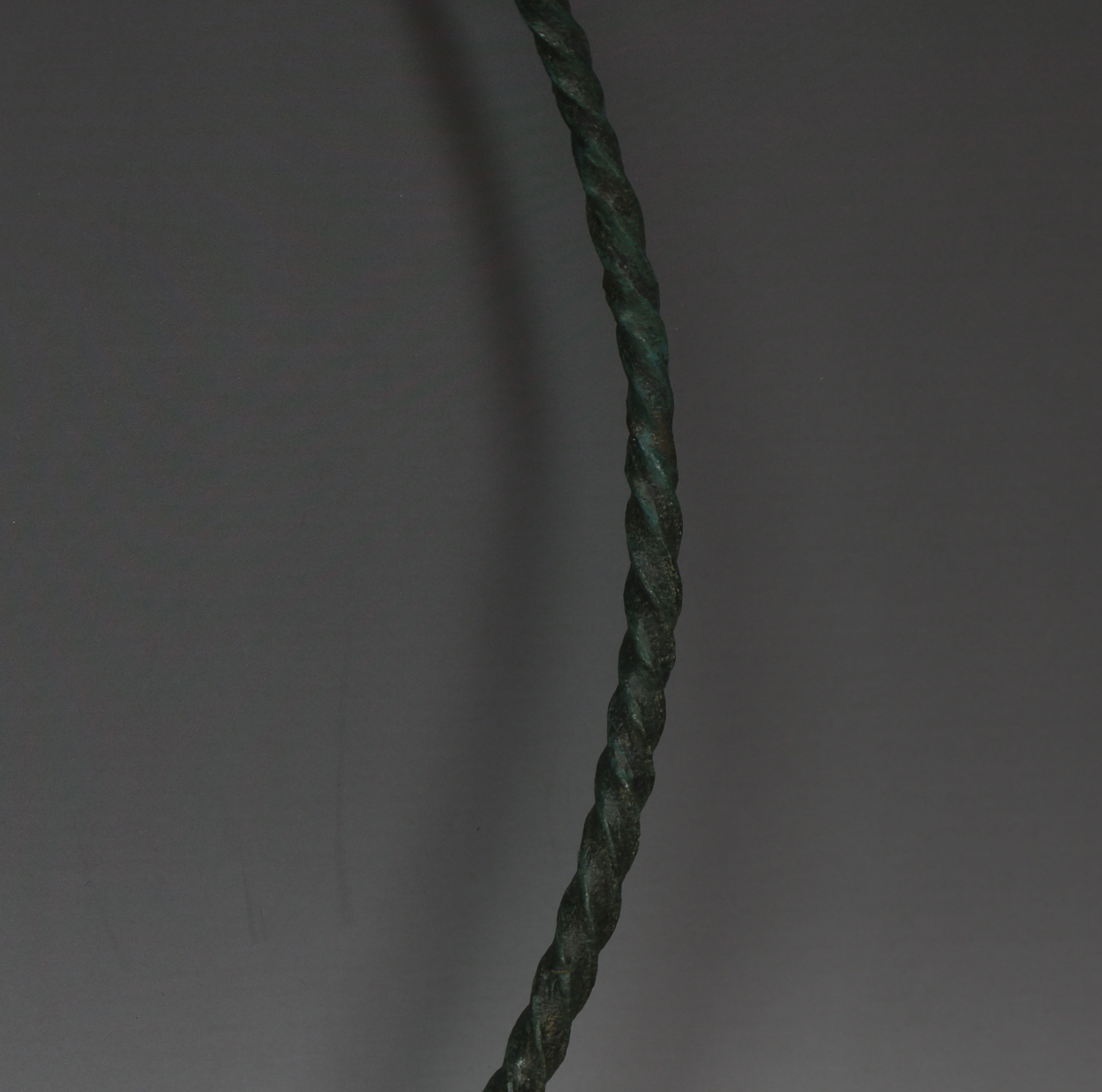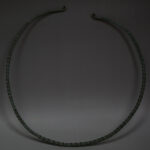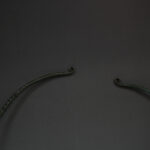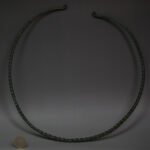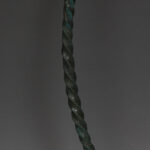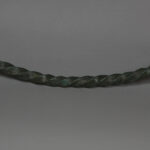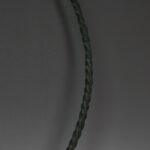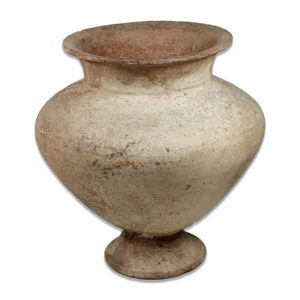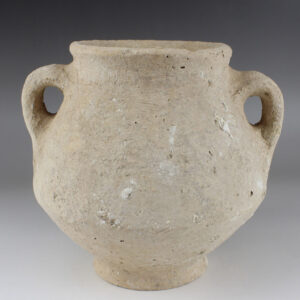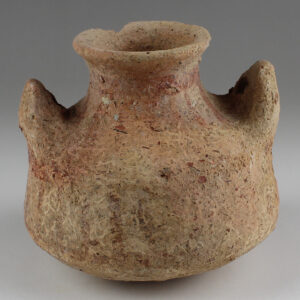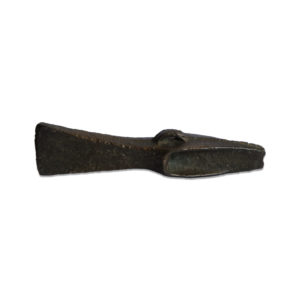Description
| ITEM | Twisted Torque |
| MATERIAL | Bronze Age |
| CULTURE | Bronze Age, Europe, Urnfield |
| PERIOD | 12th – 10th Century B.C |
| DIMENSIONS | 275 mm diameter |
| CONDITION | Good condition |
| PROVENANCE | Ex German auction house (2013) |
The Urnfield culture was a Bronze Age culture that flourished across much of Europe from around 1300 to 750 BCE, characterized by its widespread use of cremation burial practices and the deposition of cremated remains in urns or other ceramic vessels. One distinctive feature of the Urnfield culture was the burial custom of burying the deceased along with grave goods, including pottery, weapons, tools, and personal ornaments. Among the most iconic and prestigious grave goods associated with the Urnfield culture are twisted bronze torques, which were worn as necklaces or ornaments by individuals of high status.
Twisted bronze torques are elaborate neck ornaments made from twisted or braided strands of bronze wire, typically fashioned into a circular or spiral-shaped band. These torques were prestigious symbols of wealth, power, and social status in Bronze Age societies, worn by elite individuals such as chieftains, warriors, or religious leaders. The craftsmanship and intricate designs of bronze torques vary across different regions and time periods within the Urnfield culture, reflecting local artistic styles and cultural preferences.
Bronze torques were not only symbols of social status and prestige but also served ritualistic and ceremonial purposes within Urnfield society. They may have been worn during important religious ceremonies, rituals, or gatherings, where they would have played a role in asserting the wearer’s authority and connection to the divine. Additionally, bronze torques were sometimes deposited as votive offerings in sacred places, such as rivers, lakes, or hilltop sanctuaries, as part of religious or propitiatory rituals.


